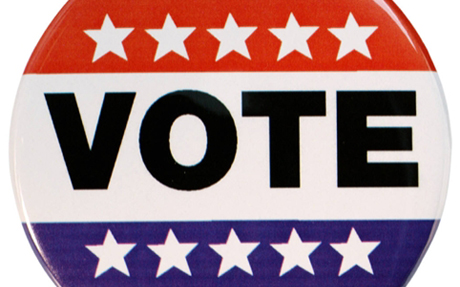In a state of more than 18 million registered voters and a city of nearly one million people, it’s easy for any one person to feel insignificant. That’s why it’s important to remember that we’re all in this together; that our collective opinions add up to something greater than ourselves; that this grand experiment called “democracy” works best when we all stand up to be counted.
With that in mind, I must admit to being disappointed in my fellow Californians, and more specifically, my fellow San Joseans. While 71-percent statewide voter turnout is nothing to scoff at, it’s well below the 79 percent seen in the 2008 presidential election and a good five points below 2004 turnout. The state’s raw numbers back up this trend: Turnout dropped off by more than 700,000 voters from 2008 despite the rolls growing by nearly 1 million new voters in the past four years.
These numbers should disturb any California-based political consultant. If the great deluge of information transmitted through direct mail, Internet marketing, TV and radio spots, bumper stickers, buttons and lawn signs wasn’t enough to move voters to the polls, what will? If the re-election of Barack Obama inspired less enthusiasm in one of the bluest states in the nation than the decidedly un-inspiring John Kerry, it may be time to re-think how we go about our jobs.
In my not-always-so-humble opinion, it’s a question of education, not persuasion. I don’t mean to say that “average” voters are stupid. But that’s how we tend to treat them. We use catch phrases and bullet points and gotcha attacks to sink the democratic process to its lowest common denominator. The end result is an electorate that votes on fear and vacant promises—or even worse, one that doesn’t vote in some races because they lack adequate information about the candidates and the offices they seek.
This brings me back to San José, where this week the City Council certified November election results. A quick glance at the two contested council races seems to suggest that many San Jose voters were uncomfortable voting down ticket. The number of voters who cast ballots in those districts and DID NOT vote for City Council—4,189 in District 8 and a staggering 6,638 in District 10—were more than enough to swing the races in either district.
How do we solve this disconnect? At the risk of engaging in the same banalities I describe above, here’s my three-point plan:
1. Restore early civics education in our schools: Most voters don’t have much of an idea what their City Council does beyond fixing potholes. I learned this stuff in grammar school, but it’s been cut along with arts, music and other valuable programs that enhance our education as a society. Let’s find a way to bring it back. Any elected officials want to volunteer their time?
2. Engage existing voters without an agenda: As long as “voter education” comes from the mouths of political parties, candidates or special interests, we’ll be stuck with a confused electorate. It’s up to independent community-based organizations to develop unbiased messaging to inform their constituents.
3. Find voters where they live: In other words, spend less money on direct mailers that end up in the trash and robocalls that get ignored or just turn people off. Spend more time and resources reaching out to friends, family and colleagues using this vast and wonderful creation called “The Internet.” A vote is all about trust. And who would you trust more than your friends?
My last point leads me to the silver lining in this year’s electoral math: The advent of online registration added more than 590,000 voters to the rolls in the final months of the fall election season—nearly half of them between the ages of 18 and 29. And according to early reports, turnout among these new voters exceeded 80 percent, well above the statewide average. I could point to stats that show proximity of registration to Election Day leads to higher turnout—regardless of the medium used to register. But it’s still a move in the right direction.
I’ll continue to examine this topic in future columns.
Peter Allen is an independent communications consultant based in Willow Glen and a proud native of San Jose. Full disclosure: He managed an unsuccessful City Council campaign in District 10.


San Jose has too many people on the City Council. The County gets by with 5 supervisors, why do we need 10 council members? Let’s cut it back to 5. That would raise the visibility of each individual councilperson, and the chance that any individual voter would know his or her councilperson’s name.